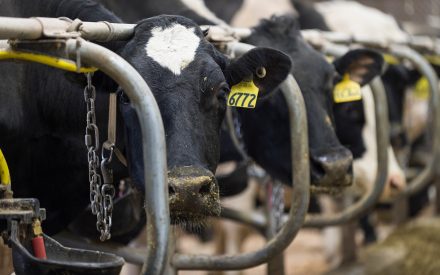Summary
Back to our roots with grazing dairy heifers
with Jason Cavadini, Extension Grazing Outreach Specialist
Just a few generations ago nearly all dairy heifers spent part of the year on pasture. Today, most dairy farmers choose not to implement grazing. But there’s good reason for dairy farms to consider going Back to Our Roots with grazing of dairy heifers. It’s important to understand the distinctions between managed grazing and other types of grazing management. The three foundational principles – the Three R’s – are what make managed grazing different. This presentation will discuss how Rotation, Rest, and Residual influence forage production, animal performance, and cost savings for heifer raising programs.
Advancing sustainable grazing: quantification of greenhouse gas emissions from pastures using a “flying” air analyzer
with Nesli Akdeniz, Livestock Controlled Environments Extension Specialist
The Rotational Grazing Handbook (A3529) recommends that all pastures with less than 40% legume content require N fertilization for optimal growth. Fertilizer application not only contributes to additional forage growth, allowing for a longer grazing period but also enhances pasture yields leading to increased carbon sequestration. However, nitrogen fertilizer should be applied in a way that minimizes the emissions of greenhouse gases and their precursors. In this presentation, we will discuss the quantification of greenhouse gas emissions from dairy pastures using a “flying” air analyzer. We will also explore the effects of split N application and drought conditions on these emissions.


 ▶️ Watch- Fresh Cows: Fetching the cow and blood money
▶️ Watch- Fresh Cows: Fetching the cow and blood money ▶️ Watch:The importance of cow handling and a revolutionary way to practice
▶️ Watch:The importance of cow handling and a revolutionary way to practice ▶️ Watch: New insights about corn silage fatty acids
▶️ Watch: New insights about corn silage fatty acids ▶️ Watch: Fats in the dairy diet
▶️ Watch: Fats in the dairy diet


